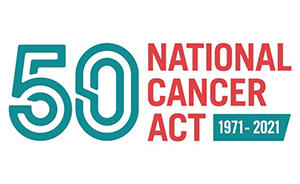Major Milestones Against Cancer
The Cancer Progress Timeline is a historical overview of ground-breaking advances in cancer research and care that have improved the outlook for patients and led to a better quality of life. With more than 400 milestones, the Timeline spans 170 years, including advances such as the advent of general anesthesia and its use for cancer surgery in the mid-1800s, the signing of the National Cancer Act into law in 1971, and recent breakthroughs in immunotherapy.
The Timeline features a chronology of Major Milestones of ground-breaking advances across cancer care and research. In addition, there are timelines that detail practice-changing advances for common cancer types and types of care. Many of the advances in the Cancer Progress Timeline have also been featured in ASCO’s Clinical Cancer Advances report, which tells the story of each year’s most influential research.
 2021 marked the 50th anniversary of the National Cancer Act, which opened a new era of cancer research in the United States. It led to a major expansion of funding for cancer research and paved the way for the next five decades of progress and advances in cancer prevention, screening, and treatment. Many of the advances in the Progress Timeline are directly attributable or can trace their development, to federal research funding. These advances are marked by ASCO’s federally funded research badge.
2021 marked the 50th anniversary of the National Cancer Act, which opened a new era of cancer research in the United States. It led to a major expansion of funding for cancer research and paved the way for the next five decades of progress and advances in cancer prevention, screening, and treatment. Many of the advances in the Progress Timeline are directly attributable or can trace their development, to federal research funding. These advances are marked by ASCO’s federally funded research badge.
To learn more about the powerful impact of the National Cancer Act, read this commentary in ASCO Connection.










